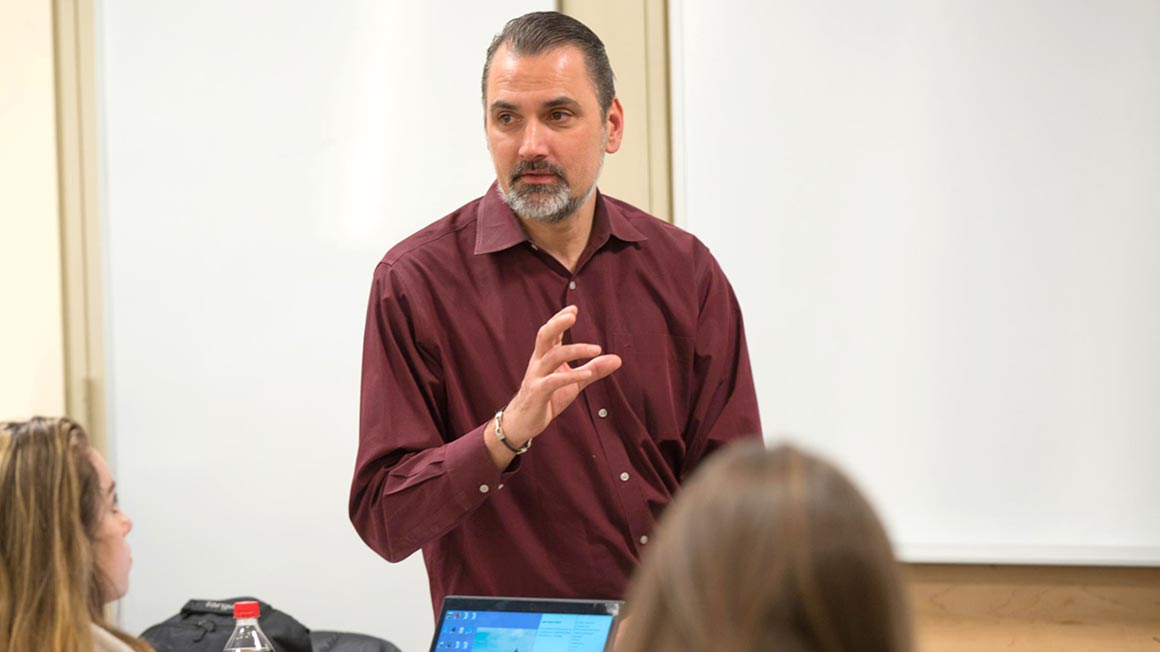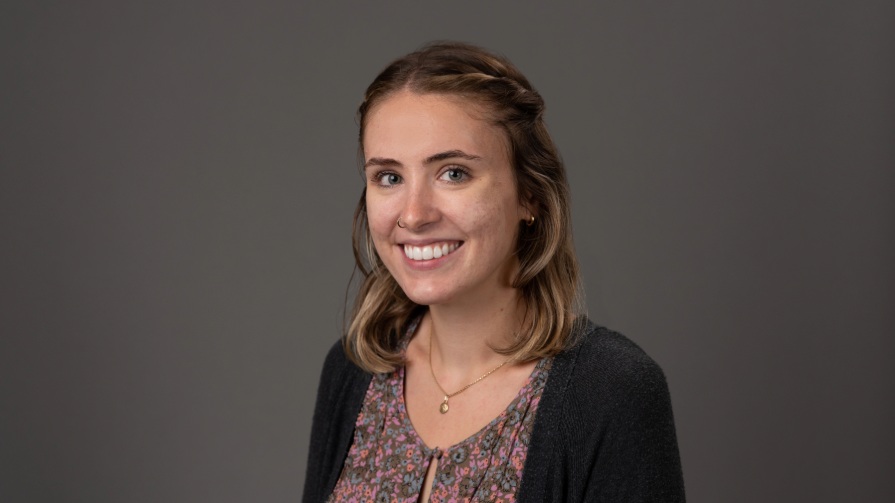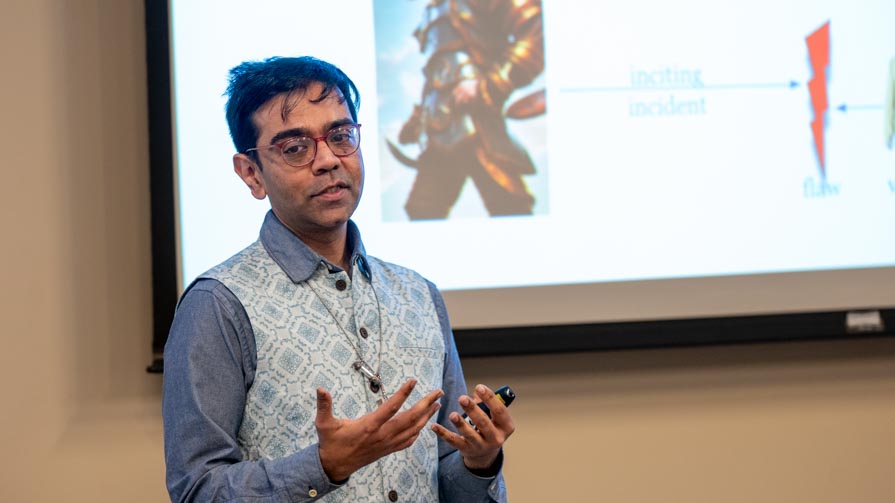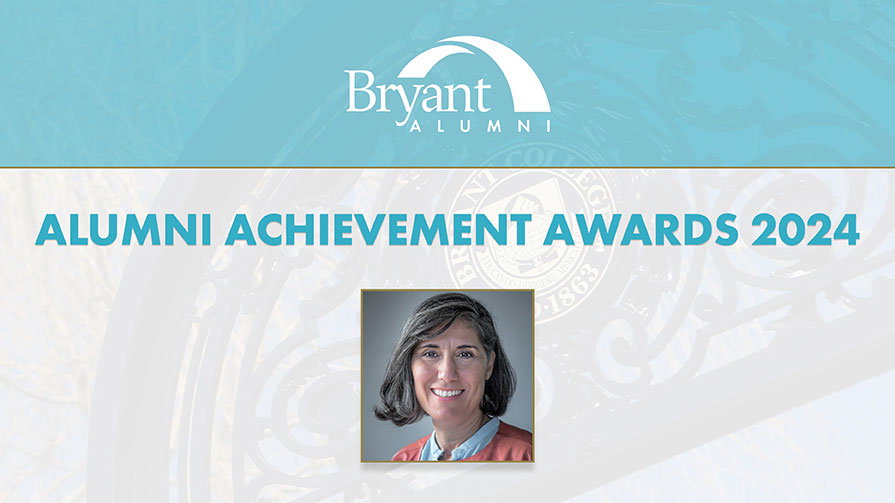Among the challenges all colleges and universities in the United States face is to provide students with the tools to tackle issues in industries that are evolving so quickly, they might not even exist yet. Bryant has been cultivating imaginative leaders who have the ability to think innovatively on their feet since its founding in 1863. What differentiates this small, private university?
At Bryant, faculty research, publish, and teach on their own schedule, not a predefined mandate, allowing the instructors the freedom to pursue projects that are relevant and that they’re passionate about. Through the Faculty Innovation Grant program, now in its eighth year, the University invests in the development of creative and innovative pedagogies designed to effectively prepare students for the world and the workplaces they will encounter when they graduate – which may be vastly different from when they entered college.
“We are fostering a culture of innovation at Bryant,” says Provost and Chief Academic Officer Glenn Sulmasy, J.D., LL.M., P’22. “These grants encourage faculty to be creative, test new ideas, and discover the most effective ways to teach students how to think critically and solve the most complex problems.”
“Properly framing the problem is first and foremost. Participants can’t employ the creative method if they don’t truly understand the issue at hand.”
One differentiating factor at Bryant is the faculty who possess industry experience and an unbridled and infectious enthusiasm for their areas of expertise. Small class sizes mean that students and faculty get to know each other, allowing for impactful collaborations that sometimes lead to undergraduate students presenting at national and even international conferences as early as their first year.
This willingness and ability of Bryant’s faculty to challenge students in how they think and contribute to problem solving is integral to the University’s distinct academic approach. These disruptions, and disruptors, are continually referenced by students and alumni as life-changing and career-defining. In every discipline – from business to biology – faculty who awaken the curiosity of students are at the heart of that Bryant culture.
Among those often-named educators is Dirk Primus, Ph.D., a seven-year Management faculty member.
Primus, an Assistant Professor of Management and two-time recipient of the Bryant Outstanding Faculty Award, says that disrupting the way people think about problems can be accomplished with well-planned techniques.
“Too often, people think of creative thinking or design thinking as a group brainstorm that requires no preparation,” says the Faculty Innovation Grant recipient. “Nothing could be further from the true concept of design thinking.”
The typical buzzwords around thinking – creative, design, and disruptive – may seem unattainable to people who consider themselves more analytical than artistic, but especially at the beginning of a problem-solving process, it’s not necessarily about creating an “a-ha” moment. There is a method to this madness of thinking like a designer, says Primus. “Properly framing the problem is first and foremost. Participants can’t employ the creative method if they don’t truly understand the issue at hand.”
Science behind the idea
Studies outline a science behind the idea of creative thinking. With 12 years of experience working as an engineer and manager in the life sciences and biopharmaceutical industries before embarking on a career as a college professor, Primus is more than qualified to speak to scientific methods.
"We can awaken creativity, and studies of brain activity have proven this.”
Numerous empirical studies find that cross-functional teams perform better and produce more imaginative results than individuals. This is why Bryant’s classes often organize into teams for projects.
Management scientists, applied sociologists, and organizational psychologists have contributed more than 5,000 publications on the topics of organizational innovation to a robust body of research, and at the top of the list is the team climate that most often leads to success.
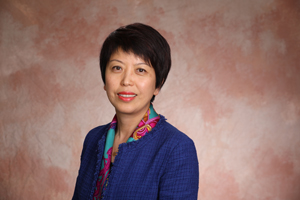
Among those studies of team climate is one by Primus and his colleague Crystal X. Jiang, Ph.D., Associate Professor of Management.
“That first gathering of the team is what we focused on," Jiang notes, "because prior observations show that the initiation is what’s most important in an innovation context. It can set the tone and direction for the first half of the team’s tenure, so it’s crucial to ensure that it’s a positive first meeting.”
The horsepower of creativity
You don’t have to be an artist to think like one. “Absolutely anyone can use creative methods to improve their work,” says Primus. “Not everyone was born with the same horsepower of creativity – there are only a handful of Michelangelos and Beethovens, even if given all the tools, nurturing, and encouragement early on. But then again, few of us maximize the horsepower we have. We can awaken creativity, and studies of brain activity have proven this.”
One of the positive outcomes of tapping into this well of creativity is that it feels good. “Beethoven wasn’t thinking about sustaining his competitive advantage when he wrote his symphonies. Engaging your hands to write, play an instrument, sculpt a statue, and other such endeavors while also engaging your creativity does something positive to our neurochemistry.”
Primus is one of only about 50 people in the United States who is a certified facilitator of LEGO® SERIOUS PLAY®, which is exactly what it sounds like – “playing” with LEGOs to stimulate out-of-the-box problem solving. As a team facilitator, he says, it’s important to know your role. It begins with some creativity warm-up exercises to get them going.
“A warm-up is critical to getting the most out of the participants and for the participants to get the most out of the process,” he says. “Even the best trained athlete wouldn’t just roll out of bed and run a marathon.”
Nurturing disruption
It is in this way that “disruptive thinking” is nurtured at Bryant. In their freshman year, students are introduced to IDEA – Innovation Design Experience for All, an intense, three-day immersion experience that introduces the culture of design thinking.
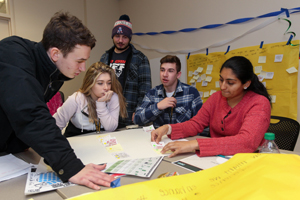
Primus takes this idea further in his classes. “Design thinking fosters creativity, but not all design thinking is a creative process. What I teach is a methodology and a process,” he says. “When I first tell my classes or the businesses I consult what we’re going to do, I’m met with skepticism by some and fatigue by others.”
This fatigue, says Primus, is brought about by overuse. “Not every problem requires creative or design thinking. When you have linear problems, analytical skills are usually fine to solve them. You should consider design thinking when you have messy, complex, so-called wicked problems."
A designerly approach usually involves multiple cycles of both analytical and creative thinking. Primus continues. “Architects such as Frank Gehry have to understand structure, foundations, materials, aesthetics, and more to perform effectively as well as beautifully. Michelangelo had to understand the medium he was working with and what tools to use to shape the final product. There’s a science of creativity, and we can use some of the methodology of the greatest artists of all time to create a better product, service, or experience.”
“Before Professor Primus’s class, my thought processes were very linear," says Kelsey Gainor ’17, ’20 MBA. "Professor Primus helped me understand that strategy, innovation, and business decisions don't follow a standard blueprint. He challenged, encouraged, and inspired me to see more possibilities. As a woman working in the male-dominated fitness industry, I feel substantially more confident in my abilities and do speak up to offer ideas that will benefit my team and company. I know the lessons I learned from Professor Primus will be invaluable as I progress in my career.”
This story appears in the Summer 2019 issue of Bryant magazine.
